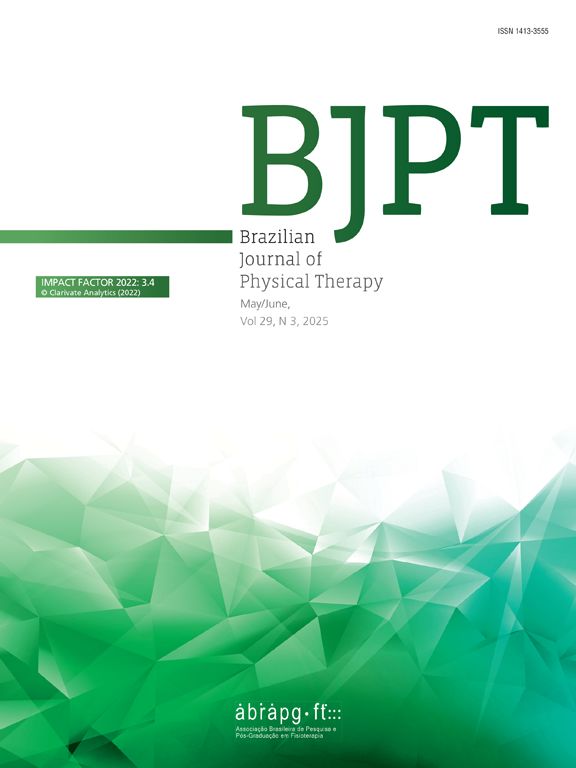
1st STUDENT SCIENTIFIC CONFERENCE OF THE BRAZILIAN ASSOCIATION FOR RESEARCH AND POSTGRADUATE IN PHYSIOTHERAPY (ABRAPG-FT)
More infoNeuropathic-like symptoms patients had more unfavorable pain features than nociceptive patients. PainDETECT questionnaire have been used to assess the central sensitization sign and symptoms. Moreover, deficient conditioned pain modulation is common in several neuropathic-like symptoms patients. However, whether the painDETECT questionnaire can identify impairment of the conditioned pain modulation it is still unknown.
ObjectivesThe current study aimed to evaluate the diagnostic accuracy of the painDETECT questionnaire in detecting the impairment of the conditioned pain modulation in participants with musculoskeletal pain.
MethodsA diagnostic accuracy study was conducted on 308 participants with musculoskeletal pain enrolled consecutively in outpatient departments. The painDETECT questionnaire (index method) was compared with the cold pressor test, the psychophysical test used to assess the conditioned pain modulation (reference standard).
ResultsMost participants were female (n = 220, 71.42%) and had a mean age of 52.21 (±15.01). One hundred seventy-three (56.16%) participants were classified as nociceptive pain, 69 (22.40%) as unclear, and 66 (21.42%) as neuropathic-like symptoms. According to the cold pressor test, 60 (19.48%) participants presented impairment of conditioned pain modulation. The cutoff point of 12 of the painDETECT questionnaire showed values of diagnostic accuracy below 70% compared to the cold pressor test, except for a negative predictive value [76.98 95% Confidence Interval (CI) 71.72 to 81.51]. The cutoff point of 19 showed high specificity (78.63%, 95% CI 73.00 to 83.56), high negative predictive value (80.58%, 95%CI 78.16 to 82.79), and accuracy of 67.53% when compared to the cold pressor test.
ConclusionPainDETECT questionnaire is useful for ruling out patients with musculoskeletal pain and impairment of conditioned pain modulation.
ImplicationsThe PainDETECT questionnaire can be used as an initial screening strategy by healthcare professionals to screen for neuropathic-like symptoms in patients with musculoskeletal pain. Researchers should use instruments with high precision to assess the presence of signs and symptoms related to central sensitization and neuropathic-type symptoms to confirm the findings of the present study. Furthermore, the diagnostic accuracy of painDETECT is just one of the considerations when determining a screening tool for musculoskeletal pain. Therefore, additional aspects must be considered.
Conflict of interest: The authors declare no conflict of interest.
Acknowledgment: This study was financed in part by the Fundação Carlos Chagas Filho de Amparo à Pesquisa do Estado do Rio de Janeiro (FAPERJ) [Grant number: E-26/211.104/2021] and Coordenação de Aperfeiçoamento de Pessoal de Nível Superior - Brasil (CAPES) [Finance Code 001; Grant number: 88881.708719/2022-01, grant number: 88887.708718/2022-00, and grant number 88887.466981/2019-00].
Ethics committee approval: This study was approved by the Research Ethics Committee of Federal Institute of Rio de Janeiro (number: 02228818.0.3001.5258).





